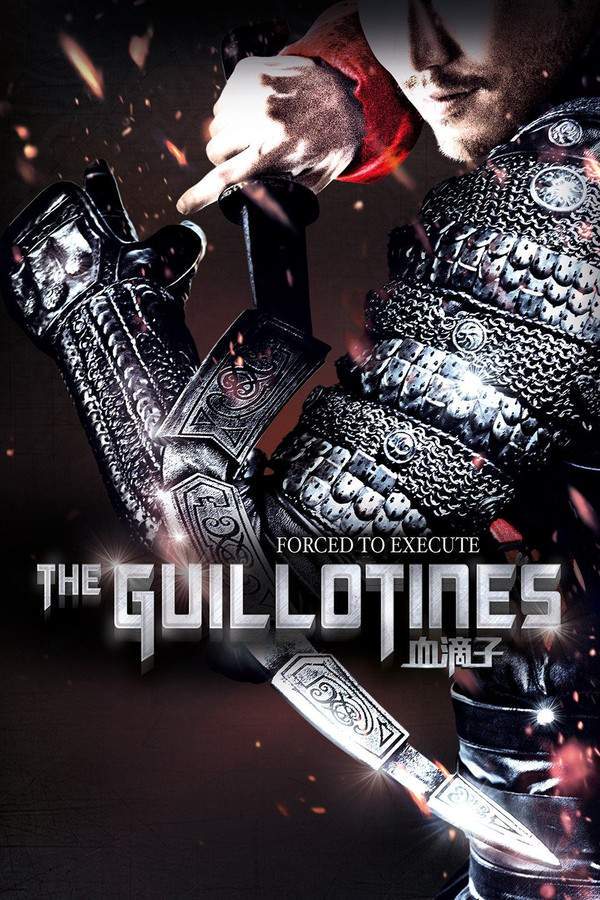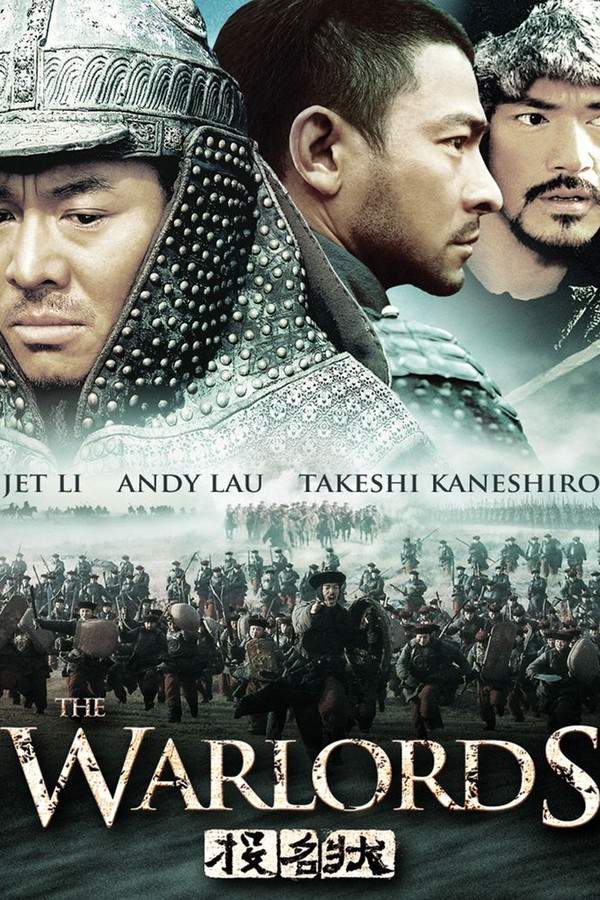
The Guillotines
Year: 2013
Runtime: 112 min
Language: Chinese
Director: Wai-keung Lau
During a period of turmoil in the Qing Dynasty, Emperor Yongzheng orders a fearsome group of executioners to hunt down and eliminate the Herders, a rebellious faction threatening his rule. The film explores themes of power, loyalty, and the brutal consequences of challenging imperial authority, as the emperor’s agents relentlessly pursue their targets.
Warning: spoilers below!
Haven’t seen The Guillotines yet? This summary contains major spoilers. Bookmark the page, watch the movie, and come back for the full breakdown. If you're ready, scroll on and relive the story!
The Guillotines (2013) – Full Plot Summary & Ending Explained
Read the complete plot breakdown of The Guillotines (2013), including all key story events, major twists, and the ending explained in detail. Discover what really happened—and what it all means.
In the oppressive atmosphere of the Qing Dynasty, under the merciless rule of the Manchus, a secretive group called the “Guillotines” emerged, created by the Yongzheng Emperor as a means to eliminate threats to his authority. Initially celebrated, this lethal squad fell into obscurity when the Qianlong Emperor rose to power, ushering in new Western ideals and advancing technologies. Hoping to solidify his control, the Qianlong Emperor wielded the Guillotines as tools of terror against the defenseless Han Chinese populace.
Leading this relentless squad was master warrior Leng, who directed a team of six talented young fighters: Musen, Houjia Shisan, Chen Tai, Hutu, Su, and Buka. United in their unwavering loyalty to the Qing court, they had successfully completed 348 missions—a testament to their skills and dedication. Yet, their latest task would become their most treacherous.
The Han people, suffering under the tyranny of their Manchurian overlords, faced mounting grievances that ignited widespread social turmoil and fierce internal strife. At the forefront of this rebellion was Tian-Lang, a charismatic Han leader known as “Wolf,” who rallied a faction dubbed the Herders to fight for their freedom. Upon capturing Wolf, Leng saw a clash of destinies unfold, as Wolf declared that he was meant to kill Leng—but not yet.
Scheduled for execution the following day, Wolf and his band executed a daring ambush, enabling his escape but leaving Bai-Lan, a member of the Herders, in brutal capture. Seizing the chance, Wolf took Musen, the only female Guillotine, as a hostage in a desperate bid for her safe return. The Guillotines were immediately dispatched to reclaim Musen and eliminate Wolf for good.
As rumors spread of Wolf’s disappearance into the wilderness, the team plunged into peril, tracking the Herders to a village struggling with a smallpox outbreak among Han settlers. Meanwhile, the emperor sent his most trusted agent, Haidu—who was also Leng’s estranged brother—to fulfill the mission the emperor deemed necessary for purging the past. Unbeknownst to Leng, their ambition almost led to the group’s utter destruction, as the emperor’s ambitions to clean his legacy meant their total annihilation.
Upon reaching the planned exchange site for the hostages, the Herders and Han settlers stood united against an unexpected assault from Haidu’s rifle squad. This deadly confrontation resulted in Bai-Lan’s tragic death, an act that left Leng distraught as he witnessed his comrades perish at the hands of his brother’s betrayal. Defying the emperor’s command, Leng opposed Haidu openly, and though both the Herders and the Guillotines managed to escape the immediate chaos, they were now labeled as outlaws.
With the authorities on their trail, the Guillotines faced systematic ruin. In a tense encounter, a battered Leng confronted Haidu, only to be shoved down a steep cliff in retribution. Miraculously surviving, he was nursed back to health by Wolf in a remote village. As Leng recuperated, he bonded with Musen, who had left the ruthless ways of the Guillotines behind after bearing witness to their brutal impact on Wolf’s family.
In this peaceful refuge, Leng finally revealed a truth he had long concealed: he was, in fact, Han Chinese. He shared a poignant history of how he was initially chosen by the former emperor to assist the Qianlong Emperor, only to have his identity overwritten by a Manchu facade—a reflection of the harsh realities and betrayals rife in their world. However, a horrific prophecy loomed forebodingly over Leng, foreshadowing a tragic fate.
The conflict reignited as Haidu returned—this time with a formidable force, fueled by vengeance against Wolf and Leng’s newly formed sanctuary. With the village evacuated, Musen selflessly volunteered to stay back, determined to protect their home, but ultimately met with insurmountable odds as Haidu’s troops unleashed a devastating assault that decimated their defenses.
After this heart-wrenching tragedy, Leng found Musen’s lifeless body—a painful symbol of their shattered hopes. As remnants of their devastated community lay in ruins, Haidu confronted both Wolf and Leng on a windswept precipice. In a final, tragic twist, Wolf perished at Leng’s hands, yet the two erstwhile enemies were compelled to return to the palace together, their worn bodies testament to the relentless grip of war and sacrifice.
Upon the palace’s grand halls, where echoes of triumph rang hollow, Leng stood brooding yet resolute, haunted by Wolf’s death, a constant reminder of the rebellion’s grim end. The Qianlong Emperor’s sycophants showered praise upon Haidu, glorifying the violent suppression of the uprising. Yet, in a moment of defiance, Leng challenged the emperor’s vision of a utopian era grounded in the suffering of his people. With profound gravity, he urged the emperor to confront the discontent among the populace and rectify past wrongs— a plea for a future free of tyranny.
Unfortunately, the emperor remained oblivious, fixated on erasing any shadows from his predecessors, even if it meant silencing Leng, the last of the Guillotines. With undeniable resolve, Leng accepted his fate, willingly heading towards execution, a final sacrifice needed to cleanse the realm of its corruption.
The tale closes on a somber note, revealing an unsettling reality: despite the emperor’s facade of peace between the Manchurian and Han people, there existed no historical trace of the Guillotines during his reign. Their silence in the annals of history stands as a poignant testament to the fragile nature of memory, illustrating how easily truth can be erased from the pages of time.
Last Updated: November 18, 2024 at 20:16
Explore Movie Threads
Discover curated groups of movies connected by mood, themes, and story style. Browse collections built around emotion, atmosphere, and narrative focus to easily find films that match what you feel like watching right now.
Ruthless Regime Tragedies like The Guillotines
Stories of brutal power and the agents crushed by their own loyalty.For viewers who liked the brutal political dynamics of The Guillotines, this section features movies about oppressive governments, elite agents, and stories where loyalty to power leads to tragic consequences. Discover similar historical epics and action dramas with heavy emotional weight.
Narrative Summary
Narratives in this thread often follow elite operatives or soldiers who serve an authoritarian power. Their initial dedication is tested as they witness the regime's true brutality, leading to a crisis of conscience, betrayal from their masters, and a final, tragic confrontation where they become the hunted.
Why These Movies?
Movies are grouped here for their shared focus on the corrupting nature of absolute power, the theme of loyalty twisted into a weapon against the loyal, and the bleak, tragic arcs of their protagonists caught in machinations larger than themselves.
Hunter vs Hunted Action Thrillers like The Guillotines
Fast-paced stories where the predator becomes the prey.If you enjoyed the relentless pursuit and dramatic role reversal in The Guillotines, this list is for you. Find movies with similar high-stakes cat-and-mouse narratives, where professional hunters become the prey in a fast-paced, violent struggle for survival.
Narrative Summary
The narrative pattern is defined by a clear hunter-hunted dynamic that undergoes a sudden inversion. The story begins with a dominant, efficient force pursuing a quarry, but a betrayal or revelation flips the power structure, leading to a chaotic and brutal survival story for the original hunters.
Why These Movies?
These films share a core structural similarity: the dramatic reversal of fortune for a specialized group. They are united by a fast pace, high intensity, violent action, and the pervasive tension of being pursued by a once-familiar, now-hostile force.
Unlock the Full Story of The Guillotines
Don't stop at just watching — explore The Guillotines in full detail. From the complete plot summary and scene-by-scene timeline to character breakdowns, thematic analysis, and a deep dive into the ending — every page helps you truly understand what The Guillotines is all about. Plus, discover what's next after the movie.
The Guillotines Timeline
Track the full timeline of The Guillotines with every major event arranged chronologically. Perfect for decoding non-linear storytelling, flashbacks, or parallel narratives with a clear scene-by-scene breakdown.

Characters, Settings & Themes in The Guillotines
Discover the characters, locations, and core themes that shape The Guillotines. Get insights into symbolic elements, setting significance, and deeper narrative meaning — ideal for thematic analysis and movie breakdowns.

The Guillotines Spoiler-Free Summary
Get a quick, spoiler-free overview of The Guillotines that covers the main plot points and key details without revealing any major twists or spoilers. Perfect for those who want to know what to expect before diving in.

More About The Guillotines
Visit What's After the Movie to explore more about The Guillotines: box office results, cast and crew info, production details, post-credit scenes, and external links — all in one place for movie fans and researchers.






























